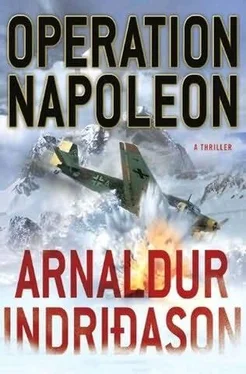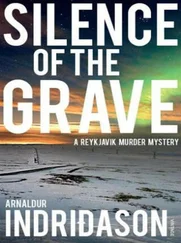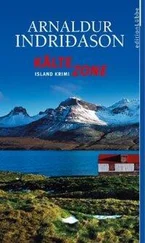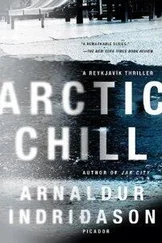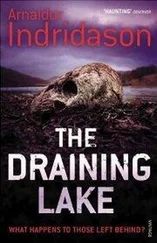She heard her brother say something unintelligible then call out to his companion.
‘Jóhann!’ she heard him shout. ‘Jóhann, what’s that?’ Kristín knew that Jóhann was a good friend of her brother’s; it was he who had been responsible for getting him involved with the rescue team in the first place.
‘What are all those lights?’ she heard Elías shouting. ‘Are they digging up the ice?’
‘You should see this. There’s something happening up here,’ he told his sister, the pitch of his voice suddenly higher. She heard him turn away from the phone and shout something to his friend, then turn back.
‘Jóhann thinks… in the ice,’ he said.
This was followed by a long pause.
‘They’re coming!’ Elías exclaimed suddenly, the words sounding in fits and starts over the poor connection. The excitement had vanished and he sounded panic-stricken, his breathing ragged.
‘Who?’ she asked in astonishment. ‘Who’s coming? What can you see?’
‘Out of nowhere. We’re… by snowmobiles. They’re armed!’
‘Who?’
‘They look… soldiers…’
‘Elías!’
‘… a plane!’
But the connection was abruptly severed and however much she yelled down the phone, alarm now rising within her, all she could hear was the dialling tone. She set the receiver gently back into its cradle and stared blankly at the wall.
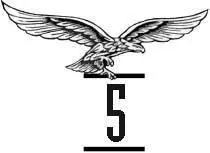
WASHINGTON DC,
FRIDAY 29 JANUARY, 1500 EST
During a long military career that had taken him all over the world, Vytautas Carr had only once visited Iceland. He was aware that the US air base at Keflavík had been established after World War II on a wind-blasted site amid the lava fields known as Midnesheidi, about an hour’s drive south-west of the capital, Reykjavík. In its time, the base had been one of the most vital strategic links in the West’s chain of defences; the island’s location in the middle of the North Atlantic proved ideal for a military superpower at the height of the Cold War, offering a superb vantage point for monitoring the movements of Soviet submarines, shipping and air traffic in the Arctic region.
He knew too that the British had occupied the country at the beginning of the war, before handing over their defence role to the Americans in 1941. The US headquarters had initially been in Reykjavík with the original detachment of troops later reinforced by the 5th Infantry Division under the command of Major General Cortlandt Parker, who had fought in Tunisia until the surrender of the Axis forces in Africa. The American occupying force had peaked at some 38,000 troops.
The presence of the US army had been a source of political friction in the country ever since the end of the war. The signing of the defence treaty in 1949 triggered a riot outside the Icelandic parliament and the left-wing political parties had been bitter in their opposition to the base over the years, though to little effect.
Government policy had always decreed that the nation should derive no profit from the NATO presence on its shores, and accordingly the military had never paid directly for their facilities at Keflavík Airport. Nevertheless, tens of millions of dollars had been poured into the pockets of the civilian contractors and service companies that carried out work on behalf of the military or held important contacts in favourably inclined political parties. In addition, the economies of the neighbouring villages had come to depend on the presence of the Iceland Defense Force, which meant that the decision to scale down operations on Midnesheidi at the end of the Cold War was met by vociferous protests from the locals.
Carr rehearsed this background as he made his way to his weekly meeting with the US Secretary of Defense. He would be called upon to explain why a C-17, on loan from the Air Transport Division in Charleston, was standing idle in Iceland indefinitely in the middle of winter. He would also have to account for the presence of Delta Force operators. Carr experienced a wave of nostalgia for the days when covert operations were covert. Nowadays a crowd of politically elected officials had to be kept apprised of every last detail of military intelligence activities in every corner of the world.
The defense secretary kept Carr waiting outside his office for fifteen minutes – deliberately, Carr was certain – before calling him inside. Relations between the two had been less than cordial during the six years the secretary had held office and Carr was now aware of an even greater chill from that quarter. They exchanged the briefest of handshakes. The secretary had learnt of Carr’s attempts to find compromising information on him – evidence of mistresses, a penchant for gambling or any other vice that could get him into trouble. Carr even went as far as to scrutinise his tax returns, bank accounts and credit card transactions. It was a precaution he took with every new defense secretary, and one which on occasion had proved useful when he needed leverage. But his luck was out this time: as far as he could establish, the secretary was as pure as the driven snow.
He was one of the Democrats’ brightest stars, a youthful, reforming orator, with a wife and children and two pets; reminiscent of Carter in his prime. A forthright opponent of state secrecy, the secretary had made several speeches about the need for openness in relation to the operations of the secret service, which had acquired a new and more wide-ranging role after the end of the Cold War. What the secretary meant by ‘new’ and ‘wide-ranging’ was uncertain, but he was without doubt one of the most vocal advocates of cutting back expenditure on the secret services and of bringing their activities under scrutiny.
Carr could not stand the secretary’s political posturing. It had pained him that he had failed to discover any disgrace in his past.
‘What’s this about a plane in Keflavík?’ the secretary started before they had even sat down. ‘What are you up to in Iceland? A C-17 costs $350,000 a day. Delta Force the same again. We cannot afford that kind of extravagance unless we’re talking about a serious emergency. And Ratoff’s a psychopath who in my opinion should not be on our payroll.’
Carr offered no answer. Under normal operational procedures, the secretary was not supposed to be aware of the existence of men like Ratoff. He reached into his briefcase for a sheaf of satellite images of Vatnajökull and handed them to the secretary.
‘What have you got there?’ the secretary asked. ‘What are these?’
‘Satellite images, Mr Secretary, of the south-eastern section of an Icelandic glacier known as Vatnajökull; the biggest glacier in Europe; a huge sheet of ice in a permanent state of flux. The enlarged image shows what we believe to be an aircraft that crashed on the glacier in the closing stages of World War II.’
‘What kind of aircraft?’
‘German transport, Mr Secretary. Most likely a Junkers.’
‘And we’ve only just found it?’
We , thought Carr to himself. Who’s we ? Christ, politicians. They were always putting themselves centre-stage. Especially Democrats, with their demands for open government, for having everything transparent and above board.
He continued:
‘As I said, Mr Secretary, it crashed during the closing stages of the war. An expedition was mounted from our HQ in Reykjavík a few days later. It was the middle of winter and visibility on the glacier was close to zero. The wreckage was buried in snow and eventually swallowed up by the glacier but it seems to be returning it to us now, a whole lifetime later.’
Читать дальше
